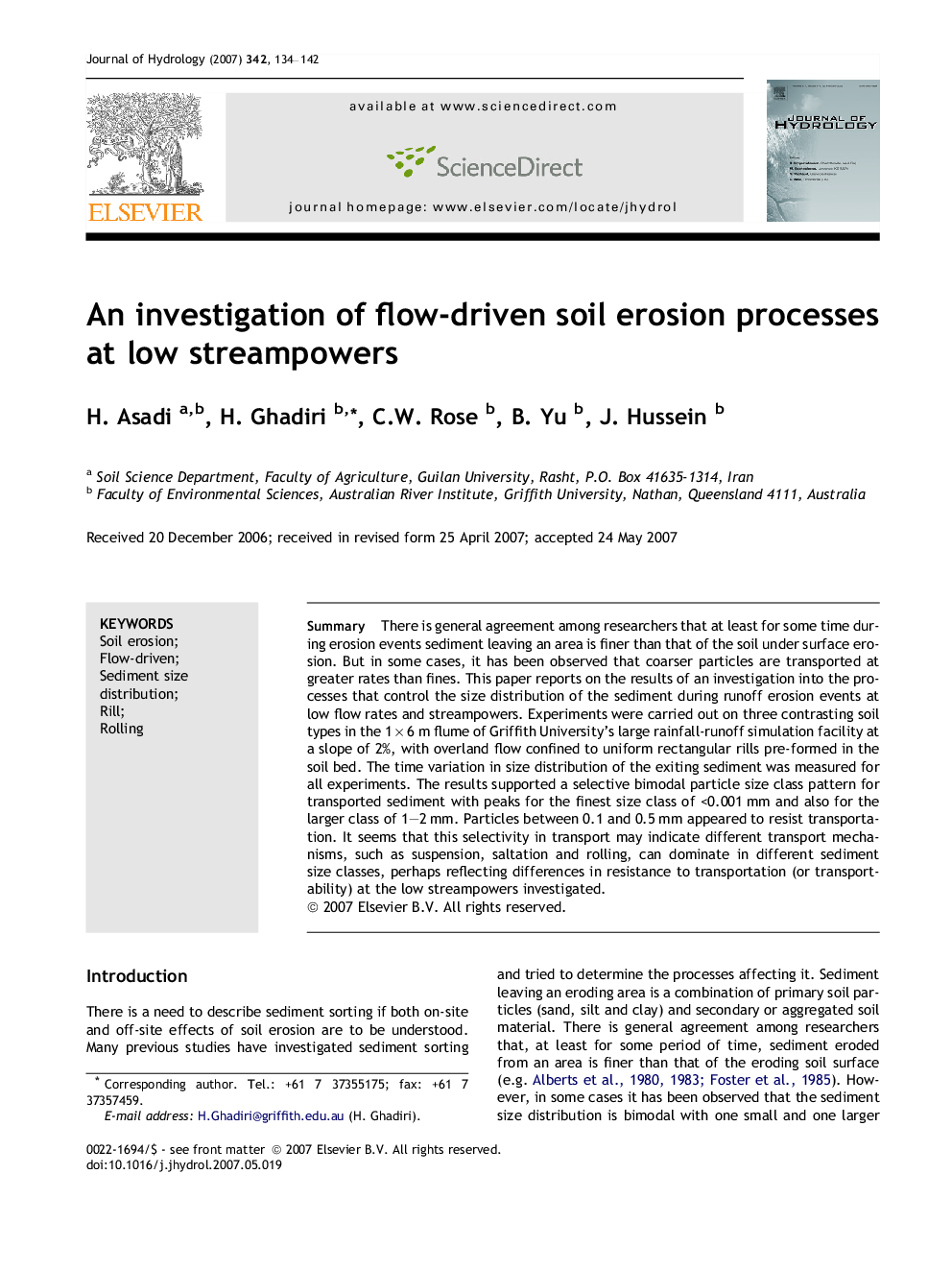| Article ID | Journal | Published Year | Pages | File Type |
|---|---|---|---|---|
| 4579864 | Journal of Hydrology | 2007 | 9 Pages |
SummaryThere is general agreement among researchers that at least for some time during erosion events sediment leaving an area is finer than that of the soil under surface erosion. But in some cases, it has been observed that coarser particles are transported at greater rates than fines. This paper reports on the results of an investigation into the processes that control the size distribution of the sediment during runoff erosion events at low flow rates and streampowers. Experiments were carried out on three contrasting soil types in the 1 × 6 m flume of Griffith University’s large rainfall-runoff simulation facility at a slope of 2%, with overland flow confined to uniform rectangular rills pre-formed in the soil bed. The time variation in size distribution of the exiting sediment was measured for all experiments. The results supported a selective bimodal particle size class pattern for transported sediment with peaks for the finest size class of <0.001 mm and also for the larger class of 1–2 mm. Particles between 0.1 and 0.5 mm appeared to resist transportation. It seems that this selectivity in transport may indicate different transport mechanisms, such as suspension, saltation and rolling, can dominate in different sediment size classes, perhaps reflecting differences in resistance to transportation (or transportability) at the low streampowers investigated.
